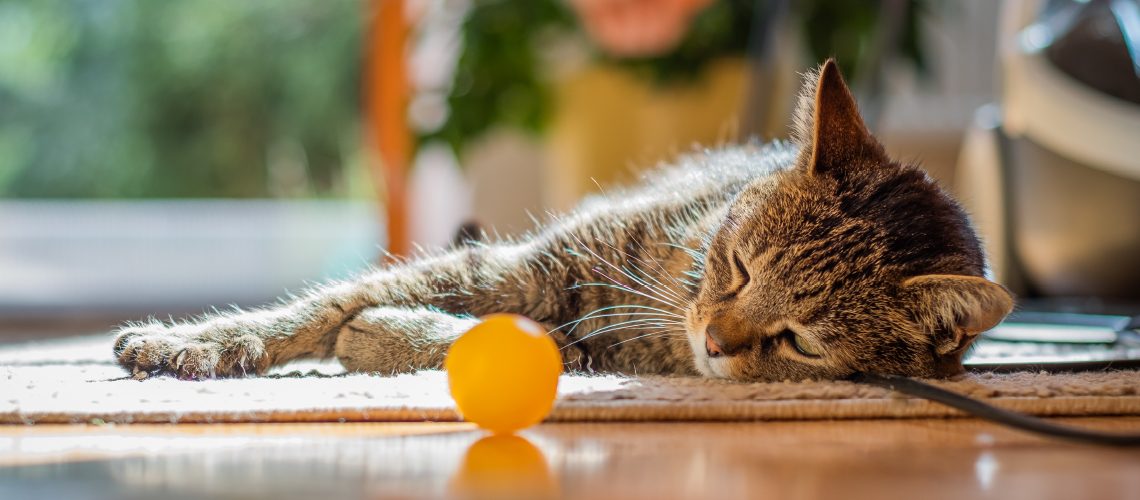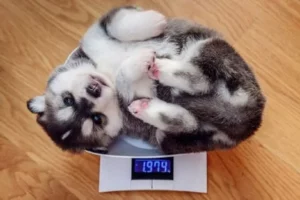Feline Coronavirus (FCoV)
The coronavirus that causes COVID-19 sickness in humans is not the feline coronavirus. A serious illness affecting domestic cats is 𝐅𝐞𝐥𝐢𝐧𝐞 𝐩𝐚𝐧𝐥𝐞𝐮𝐤𝐨𝐩𝐞𝐧𝐢𝐚 (𝐅𝐏) infectious peritonitis (FIP). It occurs worldwide in cats of all ages, but the disease is most common in young cats less than two years of age. Typically, FIP occurs in cats between the ages of 3 months and 2 years, although it can happen to any age cat.
Feline coronavirus is a virus that causes feline infectious peritonitis. Cat coronavirus comes in a variety of types, each with a unique propensity to sicken cats. Prior to this, there has been an attempt to categorise these strains as feline enteric coronavirus or feline infectious peritonitis virus strains, both of which can cause the FIP condition (essentially harmless strains mainly found in the intestinal tract). The ability of feline enteric coronavirus strains to evolve (transform) into a more dangerous virus type and cause FIP illness is currently known. It has no effect on people or other animals, and it is more frequently observed in families with many cats.
How does the Feline Coronavirus (FCoV) spread?
FCoV can be contracted accidentally by ingesting the virus, by contact with other cats, litter boxes, or dirt where other cats have used the restroom. The most frequent method of transmission is exposure to cat poop. When the maternal immunity declines at 5 to 6 weeks of age, kittens raised in infected colonies may catch the virus from their mothers or from carriers (infected cats without visible clinical symptoms). Most cat owners are unaware that their animals have the virus, which affects about 40% of cats at some point in their lives. Almost every cat exposed to the virus will get it, although the majority of cats will remain healthy and self-heal.
What are the problems caused by FCoV?
The majority of cats do not show any symptoms of FCoV infection, while some cats experience short-term diarrhoea. These cats typically continue to be healthy while shedding the virus for a few months in their faeces. A fatal condition known as feline infectious peritonitis is caused by the virus when it mutates in a very tiny percentage of cats (FIP). This can take weeks, months, or even years after the original FCoV infection to manifest and is more likely to happen in multi-cat household.
“Despite clearing FCoV and not developing FIP, a cat doesn’t become immune to the virus. It is unfortunate that a cat can re-infect with FCoV at any time and can develop FIP from a mutant virus.”
Do feline coronavirus infections outnumber FIP infections?
Cats commonly get one or several feline coronavirus strains during their lives, with rates as high as 50% in households with only one cat and 80–90% in those with many cats. 90% or more of cats with feline enteric coronavirus are still in good condition. Less than 1% of cats admitted to veterinary facilities and only 5 to 10% of sick cats have feline infectious peritonitis illness. The family of viruses known as coronaviruses is mostly responsible for respiratory diseases.
Feline infectious peritonitis
Feline infectious peritonitis is a condition that affects cats, but it is not very prevalent, and once it strikes, the prognosis is nearly always catastrophic. It is a typically lethal illness brought on by a feline coronavirus. It develops as a result of a feline coronavirus (FCoV) mutation and causes a deadly systemic illness that worsens over the course of many weeks to months. The intestinal form of FCoV, which affects the majority of cats, is different from the FIP variant. FIPV is the name of the dangerous virus that causes FIP. Although FIPV is seldom seen, FCoV infection is fairly frequent in shelters and other areas where cats are confined in close quarters.
Transmission of the FCoV
The FCoV virus is widely shed in the faeces of sick cats and is easily transmitted by fomite contact. Within a few days of infection, viral shedding may start, and antibody titers will develop in 7–14 days. The FCoV infection is typically not accompanied by any clinical symptoms; minor diarrhoea or respiratory symptoms may appear, but they will typically be difficult to identify from other frequent infections in feline populations.
How do cats with FIP develop clinical signs?
The initial symptoms of sickness in cats with FIP disease may be quite vague. Depending on which organs are affected, feline infectious peritonitis manifests differently. The liver, kidneys, pancreas, CNS, and eyes are just a few of the several organs that may be impacted. The interval between viral infection, mutation, and onset of symptoms differs across cats. Cats that are affected may be alert or sad. Clinical symptoms that are frequently described include listlessness, lethargy, a diminished or nonexistent appetite, weight loss, and a fluctuating temperature. Other symptoms often start to appear after a few days to a few weeks. There are two distinct categories of illness, however there may be some commonality:
- Wet FIP
It refers to the fluid accumulates in the abdomen, giving the appearance that it is enlarged. In the chest, this can also occur, which makes breathing difficult.
- Dry FIP
It refers to the little fluid accumulates, yet cats may seem dull, have a low appetite, or have a fever. In addition to developing jaundice, they might lose weight and experience issues with their vision, behaviour, or neurological system.
Diagnosis of FIP in Cats
FIP is challenging to diagnose. There isn’t a single blood test that can definitively diagnose FIP, and many of its symptoms might potentially be signs of other conditions. Additionally, there is no test that can tell if a cat with FCoV would eventually develop FIP. FCoV antibodies can be found in the blood, although this might be deceptive because a high level of antibodies merely indicates that the cat has had some prior exposure to the virus. Although a history, physical examination, blood tests, and testing of fluid from the chest or abdomen can all provide clues, only biopsies can provide a conclusive diagnosis of FIP.
In the following scenarios, your vet is more likely to suspect that your cat has FIP:
- Has a disproportionately significant number of white blood cells
- Exhibits increased levels of protein in the blood
- Demonstrates yellowing of the eyes or gums
- Is in a group at increased risk (young cats or cats living in an overcrowded environment)
A diagnosis of FIP may be supported by a few more tests. The immunoperoxidase test can find virus-infected white blood cells. A test for the virus in the tissue or bodily fluid can be performed using polymerase chain reaction technique. A biopsy of the affected tissue within the abdominal cavity may occasionally be carried out.
None of these tests are 100% correct, but they can support a veterinarian’s diagnosis.
Treatment
The infectious peritonitis that affects cats is not specifically treated. Although it has been recorded, recovery from symptoms is unusual. Cats with feline infectious peritonitis have a mortality rate of up to 95%. The Food and Drug Administration (FDA) has not yet authorised antiviral medications, and it is unclear how successful they will be in the long run.
The cat can be made more comfortable by receiving supportive care coupled with medication to lower inflammation and inhibit immunological responses. To select which course of therapy is best for your cat, you should speak with your vet.
Prevention
To help prevent feline infectious peritonitis, a vaccination is available. However, since many adult cats would have have come into contact with the virus, immunisation won’t save them from getting sick. As of the vaccine’s recommended starting age of 16 weeks, it may be too late to prevent kittens living in homes where the virus is prevalent. The FIP vaccination is classified as “not recommended” by the American Association of Feline Practitioners.
Less than one in ten cats with FCoV infection will later develop FIP. However, if you think your cat may have been exposed to FCoV, trying to be as stress-free as possible might assist to lower the likelihood that FIP will develop. Avoid overcrowding and adding a new pet to achieve this. Avoid as much stress as you can, such as having your pet neutered, vaccinated, and wormed. Additionally, keeping your cat’s food bowls apart from his litter box and disinfecting the litter tray at least twice a week will all help. Faeces should be removed as soon as possible after passing.
The infection can often only endure outside for a few hours or days. It can last for up to seven weeks inside in dried-up cat litter. Most disinfectants can destroy it, but be careful to choose one that is suitable for cats because several common home items are poisonous to cats. If one of your cats is discovered to have FCoV, it is quite likely that your other cats also have the virus. Keeping stress to a minimum and maintaining appropriate litter box hygiene will assist to lower the likelihood of FIP developing.




